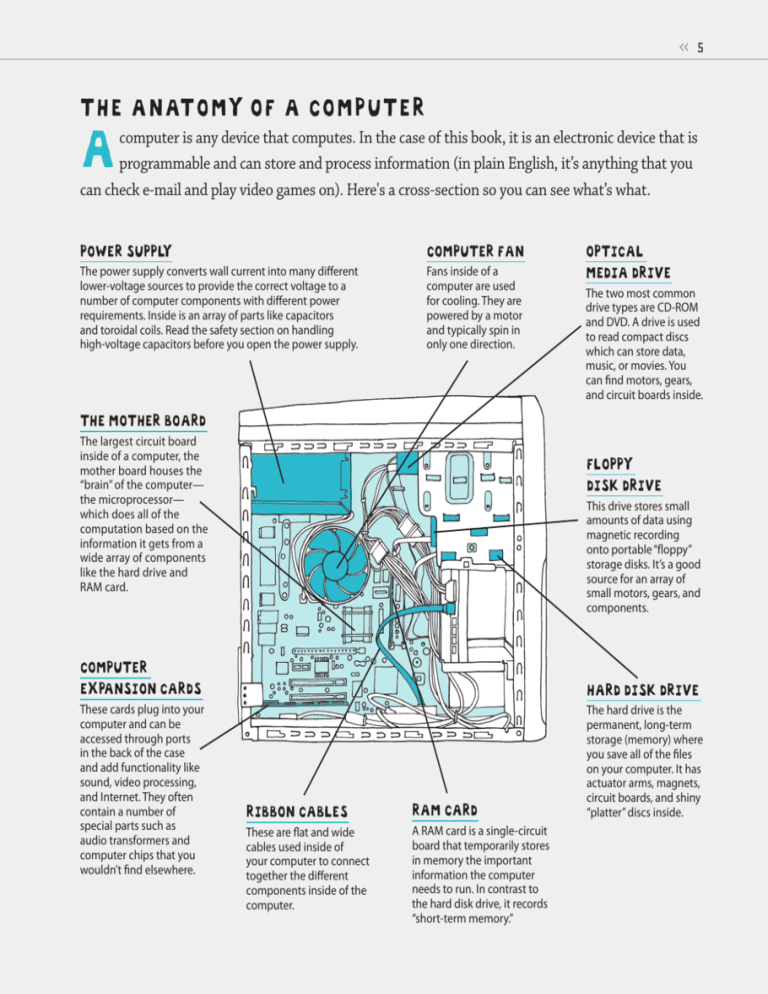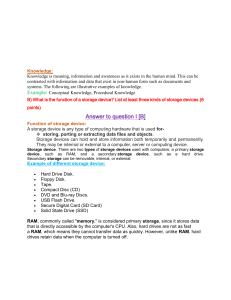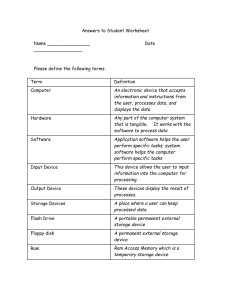Computer Anatomy Diagram: Parts & Functions
advertisement

<< 5 THE ANATOMY OF A COMPUTER A computer is any device that computes. In the case of this book, it is an electronic device that is programmable and can store and process information (in plain English, it’s anything that you can check e-mail and play video games on). Here's a cross-section so you can see what’s what. POWER SUPPLY COMPUTER FAN The power supply converts wall current into many different lower-voltage sources to provide the correct voltage to a number of computer components with different power requirements. Inside is an array of parts like capacitors and toroidal coils. Read the safety section on handling high-voltage capacitors before you open the power supply. Fans inside of a computer are used for cooling. They are powered by a motor and typically spin in only one direction. OPTICAL MEDIA DRIVE The two most common drive types are CD-ROM and DVD. A drive is used to read compact discs which can store data, music, or movies. You can find motors, gears, and circuit boards inside. THE MOTHER BOARD The largest circuit board inside of a computer, the mother board houses the “brain” of the computer— the microprocessor— which does all of the computation based on the information it gets from a wide array of components like the hard drive and RAM card. FLOPPY DISK DRIVE This drive stores small amounts of data using magnetic recording onto portable “floppy” storage disks. It’s a good source for an array of small motors, gears, and components. COMPUTER EXPANSION CARDS These cards plug into your computer and can be accessed through ports in the back of the case and add functionality like sound, video processing, and Internet. They often contain a number of special parts such as audio transformers and computer chips that you wouldn’t find elsewhere. HARD DISK DRIVE RIBBON CABLES RAM CARD These are flat and wide cables used inside of your computer to connect together the different components inside of the computer. A RAM card is a single-circuit board that temporarily stores in memory the important information the computer needs to run. In contrast to the hard disk drive, it records “short-term memory.” The hard drive is the permanent, long-term storage (memory) where you save all of the files on your computer. It has actuator arms, magnets, circuit boards, and shiny “platter” discs inside.











